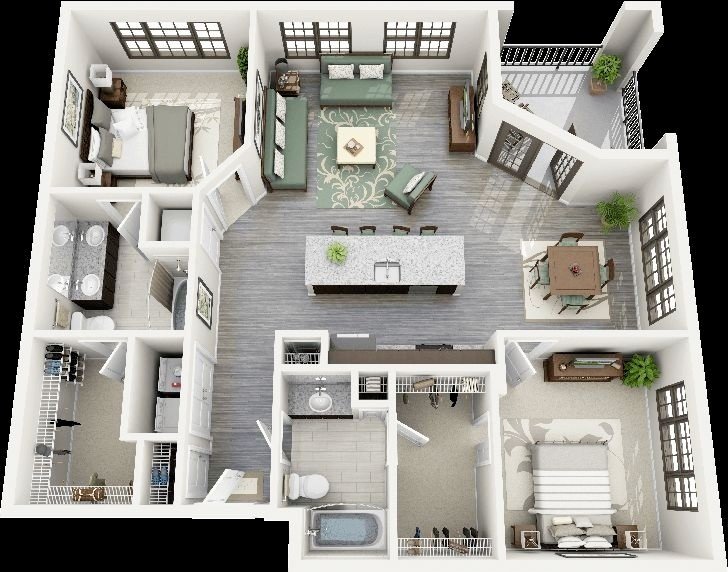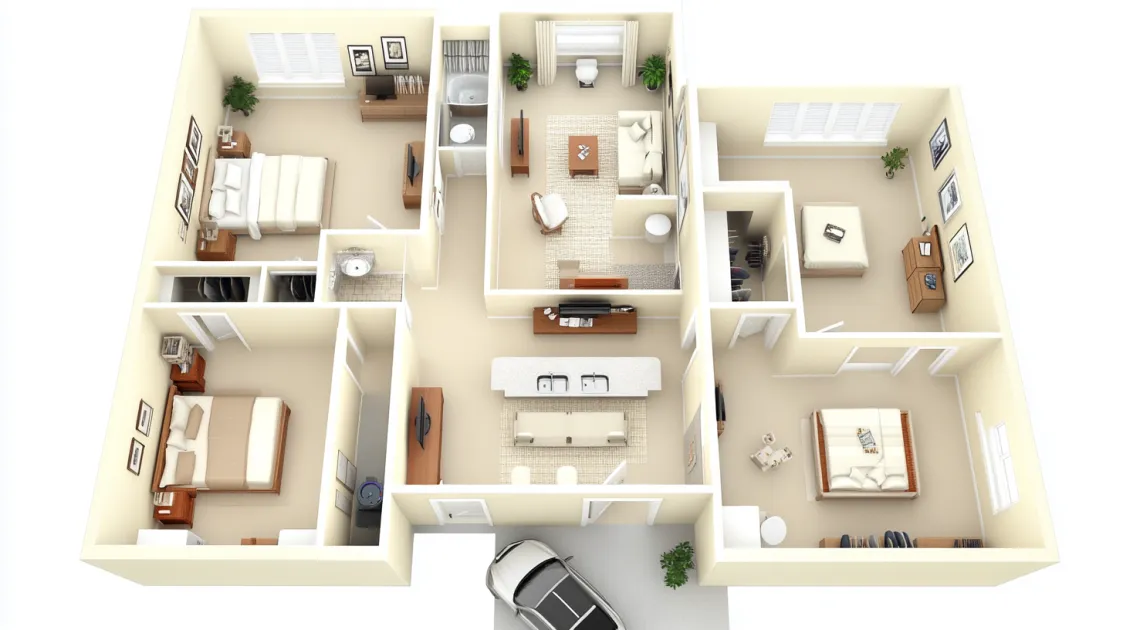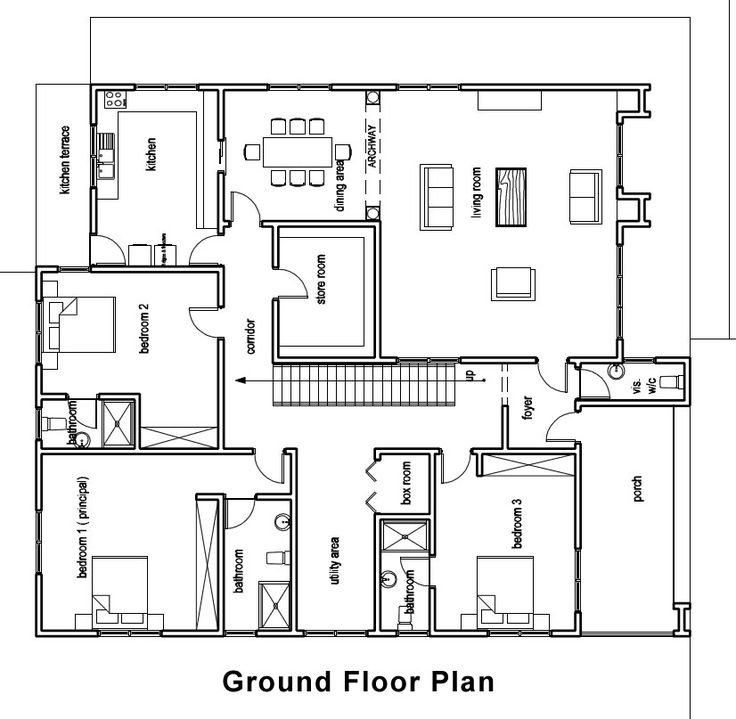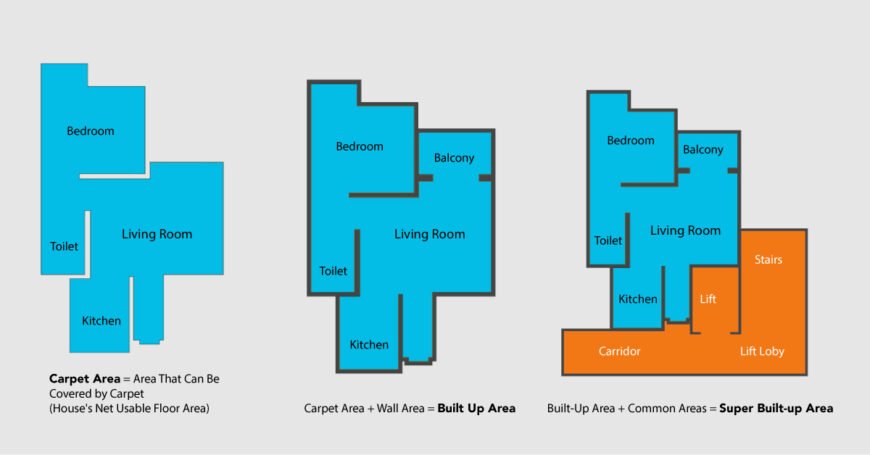Understanding Carpet Area vs. Built-Up Area vs. Super Built-Up Area: The Ultimate Guide for Property Buyers
Table of Contents
Introduction
Imagine visiting a gorgeous property that’s advertised as 1,500 sq. ft., only to find the actual space feels much smaller than you expected. Confused? You’re not alone.
The reason lies in the differences between Carpet Area, Built-Up Area, and Super Built-Up Area—three terms every property buyer must understand. Whether you’re investing in a home, an office, or a retail space, knowing these differences will help you make smarter decisions and avoid costly surprises.
What is Carpet Area?

Carpet Area is the actual usable space inside your property—the area you can physically walk on or lay a carpet on.
✅ Included in Carpet Area:
- Living room, bedrooms, dining area
- Kitchen
- Bathrooms and toilets
- Internal partition walls
🚫 Not included:
- External walls
- Balcony or terrace
- Common areas like corridors, lobbies, staircases
Pro Tip: Carpet Area usually constitutes around 70–80% of the Super Built-Up Area. Always ask for this figure when comparing properties.
What is Built-Up Area?

The Built-Up Area expands on the Carpet Area by adding the thickness of the walls and spaces like balconies or terraces.
✅ Included in Built-Up Area:
- Carpet Area
- Internal and external wall thickness
- Balcony, utility areas
Built-Up Area is typically 10–15% larger than the Carpet Area and gives you a better idea of how much space the unit physically occupies.
What is Super Built-Up Area?

This is where things often get tricky. The Super Built-Up Area includes the Built-Up Area plus your proportionate share of common areas.
✅ Included in Super Built-Up Area:
- Built-Up Area
- Common corridors and lobbies
- Staircases
- Lift shafts
- Clubhouse, swimming pool, gym
- Sometimes parking areas
Builders often quote prices based on the Super Built-Up Area. This can inflate the per-square-foot cost you’re paying because it includes spaces you share with other residents or occupants.
Also Read : Buying Property in Thane: Hidden Costs You Must Know
Why These Differences Matter
💰 Impact on Cost
- Property pricing is usually calculated on the Super Built-Up Area.
- A higher Super Built-Up Area means a higher total cost—but not necessarily more usable space.
🏠 Impact on Space Planning
- Your furniture, layout, and daily comfort depend on the Carpet Area.
- Always check how much usable space you’re truly getting.
🔍 Transparency and Comparison
- Knowing these terms helps you compare different projects accurately.
- Ask for the area breakup before finalizing any deal.
Example Calculation
Suppose a developer advertises a flat as 1,500 sq. ft. Super Built-Up Area:
- Carpet Area: ~1,050 sq. ft.
- Built-Up Area: ~1,200 sq. ft.
- Super Built-Up Area: 1,500 sq. ft.
So, while you’re paying for 1,500 sq. ft., your actual usable space may only be around 1,050 sq. ft.
Conclusion
Buying property is one of the biggest financial decisions you’ll make. Understanding Carpet Area, Built-Up Area, and Super Built-Up Area is essential for ensuring you get value for your money—and the right amount of space for your needs.
Never hesitate to ask developers for clarity. A few questions upfront can save you significant money and help you avoid buyer’s regret down the road.

